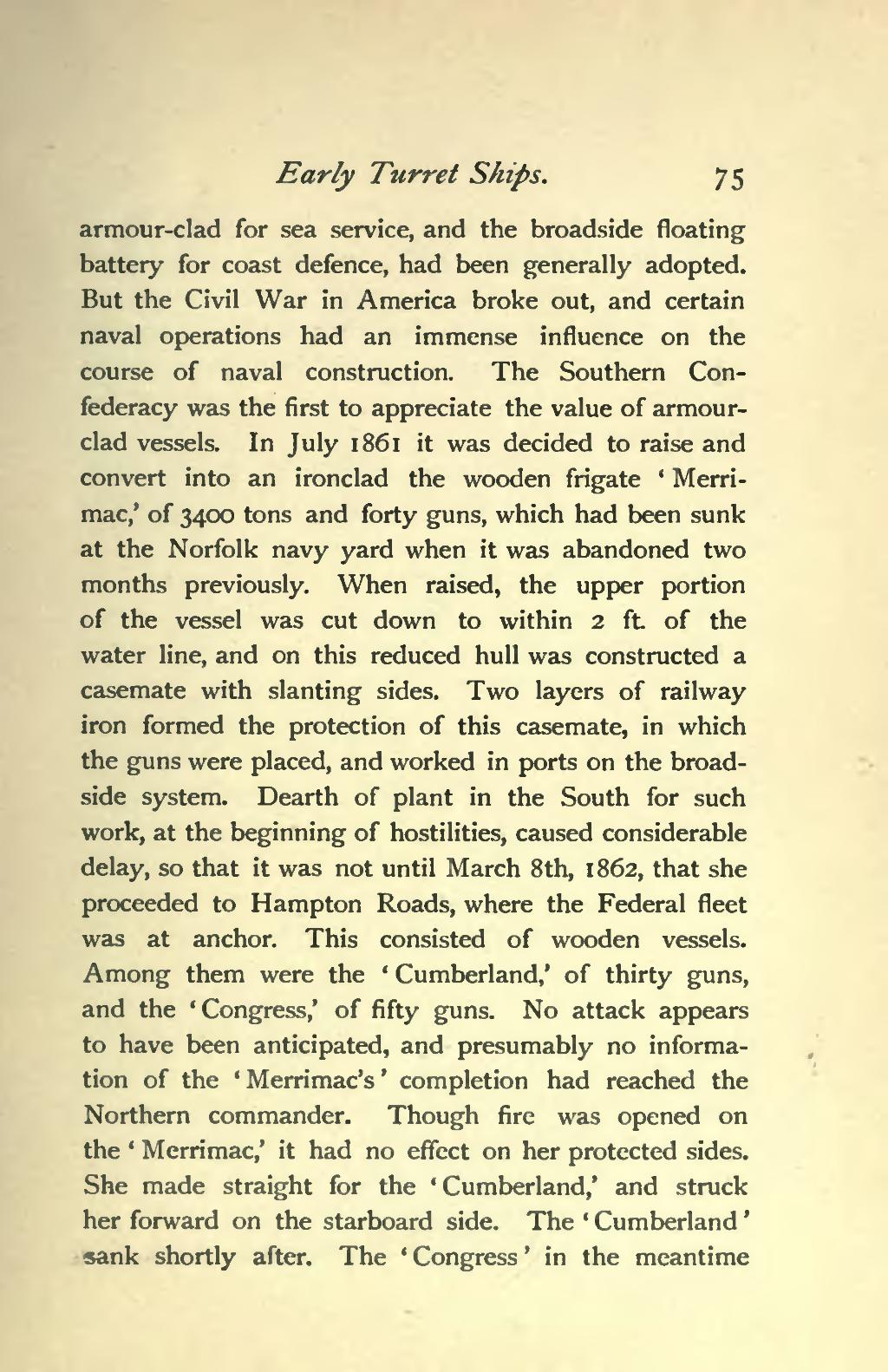armour-clad for sea service, and the broadside floating battery for coast defence, had been generally adopted. But the Civil War in America broke out, and certain naval operations had an immense influence on the course of naval construction. The Southern Confederacy was the first to appreciate the value of armour-clad vessels. In July 1861 it was decided to raise and convert into an ironclad the wooden frigate 'Merrimac,' of 3400 tons and forty guns, which had been sunk at the Norfolk navy yard when it was abandoned two months previously. When raised, the upper portion of the vessel was cut down to within 2 ft. of the water line, and on this reduced hull was constructed a casemate with slanting sides. Two layers of railway iron formed the protection of this casemate, in which the guns were placed, and worked in ports on the broad-side system. Dearth of plant in the South for such work, at the beginning of hostilities, caused considerable delay, so that it was not until March 8th, 1862, that she proceeded to Hampton Roads, where the Federal fleet was at anchor. This consisted of wooden vessels. Among them were the 'Cumberland,' of thirty guns, and the 'Congress,' of fifty guns. No attack appears to have been anticipated, and presumably no information of the 'Merrimac's' completion had reached the Northern commander. Though fire was opened on the 'Merrimac,' it had no effect on her protected sides. She made straight for the 'Cumberland,' and struck her forward on the starboard side. The 'Cumberland' sank shortly after. The 'Congress' in the meantime
Page:The Development of Navies During the Last Half-Century.djvu/99
This page has been validated.
Early Turret Ships.
75
